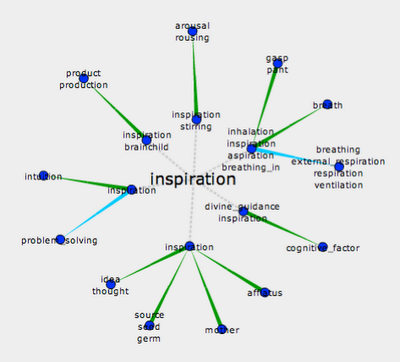If you are a teacher, a school psychologist, a speech/language teacher, or any other professional who is working in a school that has adopted RTI (Response to Intervention), or is planning to do so, now is the time to consider adopting Universal Design for Learning (UDL). Universal Design for Learning is a "Tier 1" support, as it is geared for all students. Your efforts are likely to pay off!
RTI
If you aren't very familiar with RTI, the chart below shows how the model is applied to academic and behavioral systems:
Response to intervention (RTI) is the practice of:
(1) providing high-quality instruction, intervention, and support matched to student needs;
(2) using learning rate over time and level of performance through data collection/analysis and accurate progress monitoring;
(3) make important educational decisions (data-driven decision-making, etc.)
Most schools who have adopted RTI use a team problem solving approach. Although it might vary from place to place, most use the three-tiered model of prevention and intervention for all students, including those who have special needs. Although RTI was initially designed to support students with academic difficulties, it also works well with school-wide positive behavioral support efforts.
According to Jim Wright, the creator of the web-based Intervention Central, "....To implement RTI effectively, schools must develop a specialized set of tools and competencies, including a structured format for problem-solving, knowledge of a range of scientifically based interventions that address common reasons for school failure, and the ability to use various methods of assessment to monitor student progress in academic and behavioral areas. "
If you aren't familiar with UDL, it is an approach that integrates technology, differentiated instruction, and best practices in regular classrooms to support all learners, including those considered "at-risk" or who have special needs.
- Multiple and flexible means of presenting information to students
- Multiple and flexible means of providing ways for students to respond to learning
- Multiple and flexible means of engaging students
- Educate yourself about UDL
- Educate yourself about the National Technology Standards for Teachers
- Educate yourself about using a team problem-solving approach to implement Response to Intervention and UDL
- Bring together key people who serve your school (or schools), for a series of discussions and workshops. Getting everyone's perspective is important.
- Who are these people?
- Curriculum specialists, special education coordinators, reading support teachers, instructional technology coordinators, and assistive technology consultants, school psychologists, speech/language teachers, OT's, and media specialists.
The Universal Design for Learning (UDL) model has been piloted in a range of schools in the state of Indiana. PATINS stands for Promoting Achievement through Technology and INstruction for all Students.
Daniel McNulty's is a Universal Design for Learning consultant for the PATINS program. On his PATINS-Rapid Fire blog , you can find a variety UDL-related tips, as well as links to resources.
Here are some links to UDL lesson plan links, created by real teachers: http://www.patinsproject.com/udl_team_information.htm
Although some of the information on Daniel's blog is geared for educators in Indiana's pilot classrooms, he has links to cool applications that meet the guidelines of UDL. Some would work well in UDL classrooms that have interactive whiteboards or displays, such as the online VisuWords program, an interactive graphical dictionary:
Daniel McNulty links to Tina Jone's on-line assistive technology overview course. Classrooms that provide a UDL environment are in a good position to help students with disabilities access the general education curriculum, as support for assistive technology is "built-in".
The concept of UDL was developed by the folks at CAST, the Center for Applied Special Technology, who provide an excellent on-line resource for educators that supports UDL implementation in the classroom. The resource is Teaching Every Student in the Digital Age: Universal Design for Learning. CAST is involved with the CITEd Research Center, which provides supports instructional technology integration to support learning for all students. CITEd provides information about ways to implement UDL in digital environments, also discussed in a previous post.
Additional Resources
Response-to-Instruction and Universal Design for Learning: How Might They Intersect in the General Education Classroom?
Response to Intervention (RTI): A Primer for Parent
American Speech-Language-Hearing Association RTI resources and link
National Center on Response to Intervention
National Association of School Psychologists: A Problem-Solving Model for Improving Student Achievement
Intervention Central
RTI Wire
Positive Behavior Support
RTI and BPIS Article
IMPORTANT:
If you are new to this blog, you can subscribe to it via email or through an RSS feed by clicking on the appropriate link on the side of this webpage.
If you are interested in topics such as interactive multimedia technology, the use of games in education and social skills development, engaged learning, interactive whiteboards and displays in the classroom, the use of virtual worlds and virtual reality in education and related fields, and exploring the possibilities of new technologies, take a look at my Interactive Multimedia Technology blog.
-Lynn


No comments:
Post a Comment